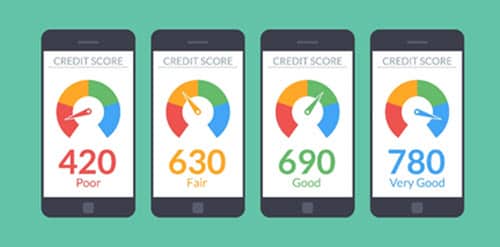
A balance transfer credit card can help you consolidate and transfer balances from other credit cards and loans onto a new card with a lower interest rate or no interest at all for a while at least.
Most balance transfer credit cards revert to their regular rate eventually; most commonly after 12 to 18 months. This so called introductory period is a time in which the low or no interest means that all of your monthly payment attacks the principal balance, allowing you to reduce the debt substantially or even completely.
This sounds great, but these cards aren't suitable for everyone, and most credit card providers need you to have a good credit rating to be eligible for approval. Not everyone has a good credit rating, so what can you do if yours is poor?
Are there any balance transfer credit cards for bad credit?
There are no balance transfer cards specifically designed for people with a bad credit rating.
Of course, you can apply for one if you think you stand a good chance of approval, but you have to recognise that you're less likely to get that approval than someone with a good or excellent score.

Applying and being rejected for any form of credit can damage your rating further, so you may want to consider other options.
What does having a bad credit rating mean?
A bad credit score usually means you have negative listings on your credit history, such as late payments or defaults. These details can indicate you have trouble managing debt, which also means lenders are less likely to approve your balance transfer application. On top of that, rejected applications can have a negative impact on your credit file, so you should only apply for a balance transfer credit card when you meet the eligibility requirements and are likely to receive approval.

Alternative solutions to a balance transfer credit card
If you don't think you're eligible for a BT card or if you've just had an application rejected then there are four different options that could help you manage and reduce your debt and, ultimately, improve your credit rating.
Focus on reducing your debts without any extra help
If a balance transfer is out of the question, you may simply need to concentrate on reducing your existing balances. This will help to improve your score over time, as well as to reduce the amount of interest that you pay each month.
Take a look at your different debts and prioritise the ones that carry the biggest interest burden first. Aim to divert any extra dollars that you can at the principal so that it generates less interest each month. It's also important to know how much your debt is in total so that you can work out how much you're already paying and how much extra you can chip in each month.
Approach your lender and be honest
If you're struggling each month, then your lender or bank will be understanding, as long as you're upfront and approach them before you default or miss payments. If you find yourself in financial hardship, your lender has an obligation to assist you.
The provider may be able to offer you a repayment plan or waive late fees in order to help you to control the debt and start to reduce it. Once you demonstrate that you can manage your money and your credit then your rating will improve and you can think again about a balance transfer for any remaining amounts.
Think about a debt consolidation loan
If you can't apply for, or have been rejected for, a balance transfer card, one option open to you might be a debt consolidation loan. There are many options available and if you're approved, you can bring all your debts - credit cards, overdrafts and utility arrears, for example - under the one loan.
Personal loans like these often have much lower interest rates than credit cards, as well as just one payment a month to handle. By paying this loan down, you can show the credit reference agencies that you're responsible enough to look for this solution and to see it through.
Can I get a balance transfer for bad credit if my rating is improving?
It's very tempting to try for a balance transfer credit card within a few months of being rejected for one simply because of the low or no interest introductory period. However, you need to concentrate on bringing your debt down without simply transferring it to another card so that it really is gone and your rating is up. There's always the risk of not clearing your debt before the BT card goes onto its' revert rate, which may actually be higher than your "regular" card interest rate.
The information contained on this web site is general in nature and does not take into account your personal situation. You should consider whether the information is appropriate to your needs, and where appropriate, seek professional advice from a financial adviser. If you or someone you know is in financial stress, contact the National Debt Helpline on 1800 007 007.